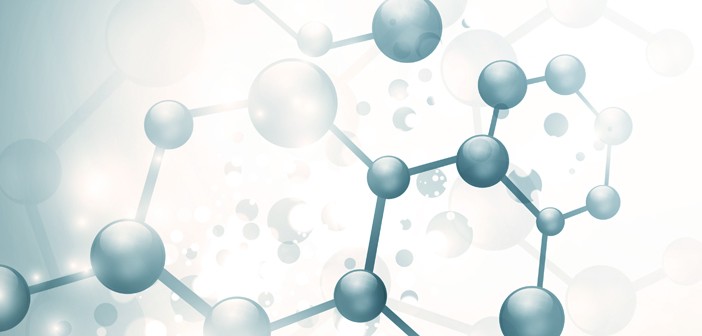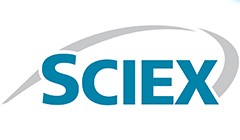Webinar Q&A follow up – Soup to Nuts of Large Molecule LC–MS/MS Bioanalysis: From In Silico to Sample Preparation, Microflow and Optimal Source Design

Thank you everyone who attended our live webinar ‘Soup to Nuts of Large Molecule LC–MS/MS Bioanalysis: From In Silico to Sample Preparation, Microflow and Optimal Source Design’ in association with SCIEX. Below are some responses to the questions posed during the live event. We hope this is a useful resource and thank our webinar attendees as well as our speaker, Shane Needham (Alturas Analytics; ID, USA), for his time.
What do you think of a fully integrated source/column?
Shane: Integrated source and column systems where you’re combining HPLC are a huge part of the future. OptiFlow represents a step closer to this with a direct connect column. The move to microflow and nanoflow systems, which are integrated (where the column is the source and the source is the column), make bioanalysis easier and more convenient for scientists, with less dead volume and less connections. Currently, this is becoming reality, but it is a slow process and indicative of future developments.
Were source conditions optimized for each source?
Chad: For this experiment we did not optimize each source and left voltages and gas flow rates the same in order to compare apples to apples. In experiments performed offline, source conditions for the normal source optimized the same as for the OptiFlow source.
Shane: The research we do at Alturas is about productivity and seeing whether it will work in our lab. People ask lots of questions about parameters being different during testing, but we are more interested in seeing whether it works without adjustments. Lots of optimization is not usually going to receive as much traction in the laboratory, so we optimize as little as possible to compare if this will actually work.
What are the lower limits of detection you have achieved for LM using the low flow OptiFlow?
Shane: This is very dependent on the class of molecules we’re working on. The lower limit depends on whether it’s a peptide, small molecule, large molecule etc.
Chad: Yes, this is very compound dependent. For most compounds we can reach 1ng/ml, whereas we see 5ng/ml for normal flow, so there is a signal increase from normal flow.
Is the temperature sleeve commercially available? Can it be controlled by analyst software?
Chad: We get our temperature sleeves from Analytical Sales and Services. As far as I know, they cannot be controlled by software as we do not use in in that way and just set the temperature.
Do you think this method is robust enough to be used clinically?
Shane: Yes, one of our last slides describes this. We want to validate more methods in the clinic using microflow and OptiFlow sources and we recently completed a clinical study where we are using microflow and optimized conditions. With any of the technologies that we work with, with our vendors, one of the first things we do is determine whether we can validate it, use it in production work and in GLP type clinical or preclinical bioanalysis. We have found that this does work in this setting and we are purchasing more instruments, sources and microflows as microflow will slowly replace normal flow for these purposes.
Do you use SIL versions of your large molecule analytes in your studies?
Shane: We would like to; however, they can be difficult to synthesise. We use an ADC mimic from Sigma Aldrich, which we are pleased we can use and publish results from. Unfortunately, the stable label of this was not available, however, if it was we would use it. We used a similar analogue, however, if you can access an analogue of your molecule of interest – use it.
Can you tell the actual difference between your conventional and OptiFlow source?
Shane: We see performance gains; gains in signal, area and height, and reductions in noise. Using OptiFlow vs normal flow, we see 4x to 20x gains depending on the conditions and molecule type. The most important part of any technology development, however, in our industry and many others is convenience. It is an easy change to OptiFlow source and there are no other adjustments necessary. If this question regards physical differences, we would recommend to contact SCIEX.
Why didn’t we use the 25um electrode for our MFLC?
Chad: We found that the 25um electrode clogged very easily. The electrode that comes from the normal source is almost twice the length as the OptiFlow electrode, so it was difficult to prevent clogging after just a few injections. Also, the pressure difference with the normal source electrode was a lot higher, around 2x based on the length.
How do you select MRM at this stage without Matrix in Terms of uniqueness?
Shane: There is actually shareware and freeware available for when we choose those initial peptide transitions.
Chad: We get our transitions on Skyline and I will verify that there is no interference in the matrix. Once optimised I will check 2 or 3 of these MRMs and verify after extraction and plasma that there are no selectivity issues.
Shane: There is shareware available that predicts possible selectivity problems based on species and matrix.
Chad: This is called BLAST. If you put in the sequence, this will give you a match percentage and provides a great start point to check for interference.
We understood the pros of Microflow LC what would be one major cons of the technology?
Shane: In our industry, whether it be microsampling or microflow etc. things are moving towards smaller technologies. Right now, not all column dimensions and column stationary packing phases are available so I would recommend that vendors consider changing this as microflow becomes more and more widely used. Now that we see optimized systems and we know what conditions work, I don’t see any other cons.
Chad: From an analytical standpoint, where there is a particularly dirty sample, there is potential for clogging with the small diameters within the system. Additionally, the small flow rate may make it more difficult to detect a leak.
How is the troubleshooting on MFLC systems? More downtime than conventional UHPLC, do you see leaks?
Shane: We are not seeing more downtime, in fact we are seeing more uptime. For troubleshooting, as Chad covered, there is more difficulty in detecting a leak then for normal flow due to the low flow rates. More uptime due to ‘apparent injection advantage’ – due to smaller samples required, there is less contamination of the mass spectrometer and the system and this leads to more uptime.
Chad: I agree. Another factor which helps with uptime is the more advanced technology we are using, such as the M Class pump from Waters, which is smart enough to tell you exactly the error so there is no longer any guesswork involved in troubleshooting.
How would you describe the learning curve for a lab switching from conventional flow LC–MS/MS to microflow?
Shane: When looking at new technologies, where there is a large learning curve we will avoid adopting it despite being educated scientists. If a new product is difficult to use we will wait for the next iteration. The move over to the OptiFlow source was very easy and only involved physically moving the pump over and changing the source and flow rates.
Chad: The training is a 10 minute exercise which is seamless and has no problems.
What immunocapture techniques do you routinely use?
Shane: Some examples are MSIA and magnetic beads.
What is your strategy in Terms of ISTD in human Plasma? As far as I know Silumab is only feasible with preclinical species.
Shane: To our knowledge Silumab can be used in human samples.
Which Emitter ID do you use?
Shane: Conventional: 50um, OptiFlow: I would suggest that you contact SCIEX for exact dimensions.
I’m really a fan of microflow, however can you tell something in terms of carry-over issue and how to prevent it?
Shane: We detect minimal carry-over with the Waters M Class system.
Why don’t you use the Eksigent platform?
Shane: We evaluated the Eksigent system and the Waters M Class works better in our workflows.
What is the reason for using 10–50µl flow module and not 1-10µl for your analysis in MFLC?
Shane: Typically, our MFLC flowrate is 10–50 uL/min.
What types of capillaries do you use? PEEKSil oder stainless stell in 50µm?
Shane: Please contact Sciex for exact specifications.
To access the full on demand webinar and Q&A session, click here.
In association with:

